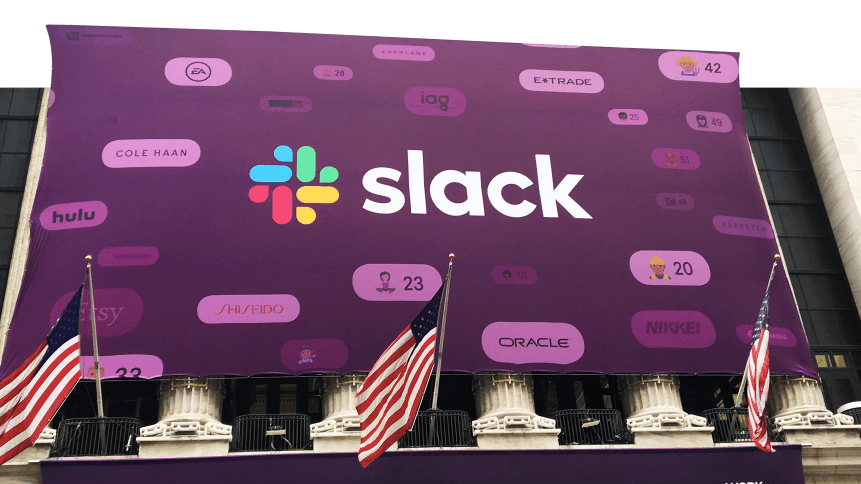Are managers connecting with employees in a digital age?

Millennials and Generation Z will make up more than half of the workforce (58 percent) within the next decade— they currently represent around a third.
That means that soon, many will be dominating managerial positions, with 48 percent of Gen Zs and Millennials holding a director level or higher.
READ NEXT

How to keep your Gen Z employees
As these younger generations— who have grown up accustomed to technology and digital communication— begin to orchestrate and conduct the operations of their businesses, it would be short-sighted to expect traditional ways of working to remain the same.
Facilitated by new means of communication established early in their social lives, already, this younger portion of the workforce are bringing new expectations from their organizations.
Fast connectivity, wherever we are, and a deluge of instant messaging and collaboration apps, means we’re constantly contactable— we are visibly ‘online’ and accountable. As such, flexible and even remote working arrangements are increasingly expected among staff, and increasingly accepted among managers. We can expect these preferences to take hold further as Gen Zs and Millennials continue to climb the ranks.
Communications in a digitized workspace
These tech-driven changes in workplace communication and the means to which it’s carried out are one of the key ways in which the workplace will change— as channels and methods become fluid with one another, the need and expectations for rigid meetings or phone calls will subside further.
In a survey, about 23 percent of gen z employees regarded texting as a “crucial” way to communicate in the workplace, while a UK survey by HR solutions provider SD Worx revealed that 56 percent of employees use their mobiles to complete basic HR-related tasks, such as ‘texting’ in sick.
“As technology becomes even more ingrained in our personal lives, it’s not surprising that the lines may blur between personal and work devices,” said Brenda Morris, MD of SD Worx UK and Ireland.
Today, it’s not unusual for employees in the same room, or even side-by-side, to communicate and collaborate on projects via messaging platforms such as Slack. Rather than managers catching co-workers off-guard or unprepared, this allows them to finish what they’re doing and provide a thought-out response.
Like email, messages are also retractable, searchable, and documented with minimal effort— it’s easy to keep track of information and share resources and files.
At the same time, though, this way of communicating is nullifying the need for in-person communication and, according to Sameer Maskey, CEO of AI software company Fusemachines, this is posing some problems when it comes to managers really getting their message across in a way that hits home with their teams.
“The main difficulty in the digital age is the lack of face-to-face communication,” Maskey told TechHQ.
“It is likely that some context is lost, the tone is missed when we switch from in-person communications to something less verbose like email or instant messages.
“As a result, management may fail to capture how employees really think and feel. They also lose the opportunity to read their employees’ body language, which is typically an effective way to gauge how an employee is thinking or feeling. The digital age has made it challenging to figure out if employees’ goals are aligned with the company’s goals and mission.”
Voice of employee in a digital form
As we move to an age where managers are “just one click away” from their teams, efficiency in workflows and project management will likely follow. But, at the same time, facetime between co-workers will become both rarer and less practiced.
As such, employees can seek to avoid “awkward” conversations with managers about workplace issues or discontentment, meaning certain warning signs can go unnoticed and retention can suffer as a result. Employees may choose to “ghost” their managers, going straight to HR with their issues or resignation.
“Employees who aren’t feeling engaged and connected at work are always going to be looking to the next opportunity,” Sanja Licina Ph.D., Future of Organizations at IT and Software Development company Globant, told TechHQ recently.
“Often employees feel they have expressed their dissatisfaction or frustration and no one listened, so in the end, they decide to leave without having a conversation because they feel there is nothing their employer can say to change their mind to stay.”
Maskey believes that Voice of the Employee (VoE) technology will play a bigger part in connecting teams to one another in this age of digital communication.
“Recently, we helped an HR software company to implement artificial intelligence that draws insights and data directly from employee surveys. AI analyzes the survey results to identify the manager’s strengths and weaknesses and then send the manager’s relevant skills enhancement articles based on this data,” Fusemachines shared with TechHQ.
The aim of the VoE solution is to detect any signs of dissatisfaction of employees and uncover the possible factors behind it. Managers can change tact or tackle issues of dissatisfaction, and the result can be better employee retention as voices are heard, without the pressure and emotions of an in-person conversation.
YOU MIGHT LIKE

Can we combat employee ghosting with technology?
“VoE analytics gives companies the power to listen to their employees. The companies that are willing to act upon this feedback and provide employees with the trust and respect they deserve, will have better retention rates,” said Maskey.
Meanwhile, this technology could become better at predicting employee retention rates with advances in Machine Learning and Natural Language Processing, also using data sources available to identify underlying reasons.
“Employee’s feedback even from social media and internal discussions can be analyzed to get areas of their dissatisfaction by using Sentiment Analysis and Named Entity Recognition,” said Maskey.
“The managers can better understand their employees’ problems and get suggestions that can help them improve their leadership role and overall key metrics within the company.”
Of course, organizations should consider treading lightly with such advances in VoE technology; knowing that their every message, and the wording they’re using, is being crawled and processed by AI programs is hardly likely to be conducive to a relaxed, trusting and productive working environment. In the end, time and effort in communications are the essence of the building and maintaining strong working relationships.
Despite preferences moving towards digital communication methods, 40 percent of Gen Z employees claim that daily face to face interactions remain essential to their working day.
Companies and management would do well to keep an open mind and remain flexible to all different forms of communication that encourage each and every employee to be open and forthcoming with their ideas and feelings.








